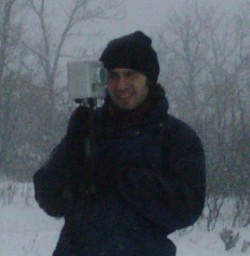Electromagnetic methods
Electromagnetic methods or electrical methods in alternating current AC are based on the study of the subsurface through changes in the electrical and magnetic properties of the materials.
Electromagnetic fields can be natural or artificial. These methods can study in detail the first meters or reach several miles deep with lower resolution. The information they provide can be 1D, 2D, or 3D. They have different variations and they are able to define very diverse goals.
The so-called light electromagnetic methods employ relatively simple devices. They allow performing electromagnetic pits over large areas in a moderately short time. They provide information of electrical conductivity which allows defining lateral changes of materials up to a few tens of meters deep. They are mainly applied in archaeology and geotechnics.
The deep electromagnetic, whether in the time or frequency domain, use loops and dipoles of large size along with reception antennas. Its main application is in hydrogeology and metallic mining, though due to their great penetration depth they can be used in any deep geological study. Within this group we can highlight:
-
 Los Time domain electromagnetic surveys (TDEM) provide 1D or 2D information of electrical resistivity up to a maximum of 1 km depth.
Los Time domain electromagnetic surveys (TDEM) provide 1D or 2D information of electrical resistivity up to a maximum of 1 km depth. -
Magnetotelluric (MT) and Audio Magentotelluric (AMT) soundings give 1D and 2D information of electrical resistivity up to several kilometers depth. They use natural telluric currents. In areas with noise an artificial current can be used as a source reaching shallower depths of study but higher quality measurements (CSAMT - Control Source Audio magnetic Telluric).
Finally the very low frequency electromagnetic devices (VLF) are based on the study of frequencies between 10 and 30 Khz. They are mainly used in structural geology.



